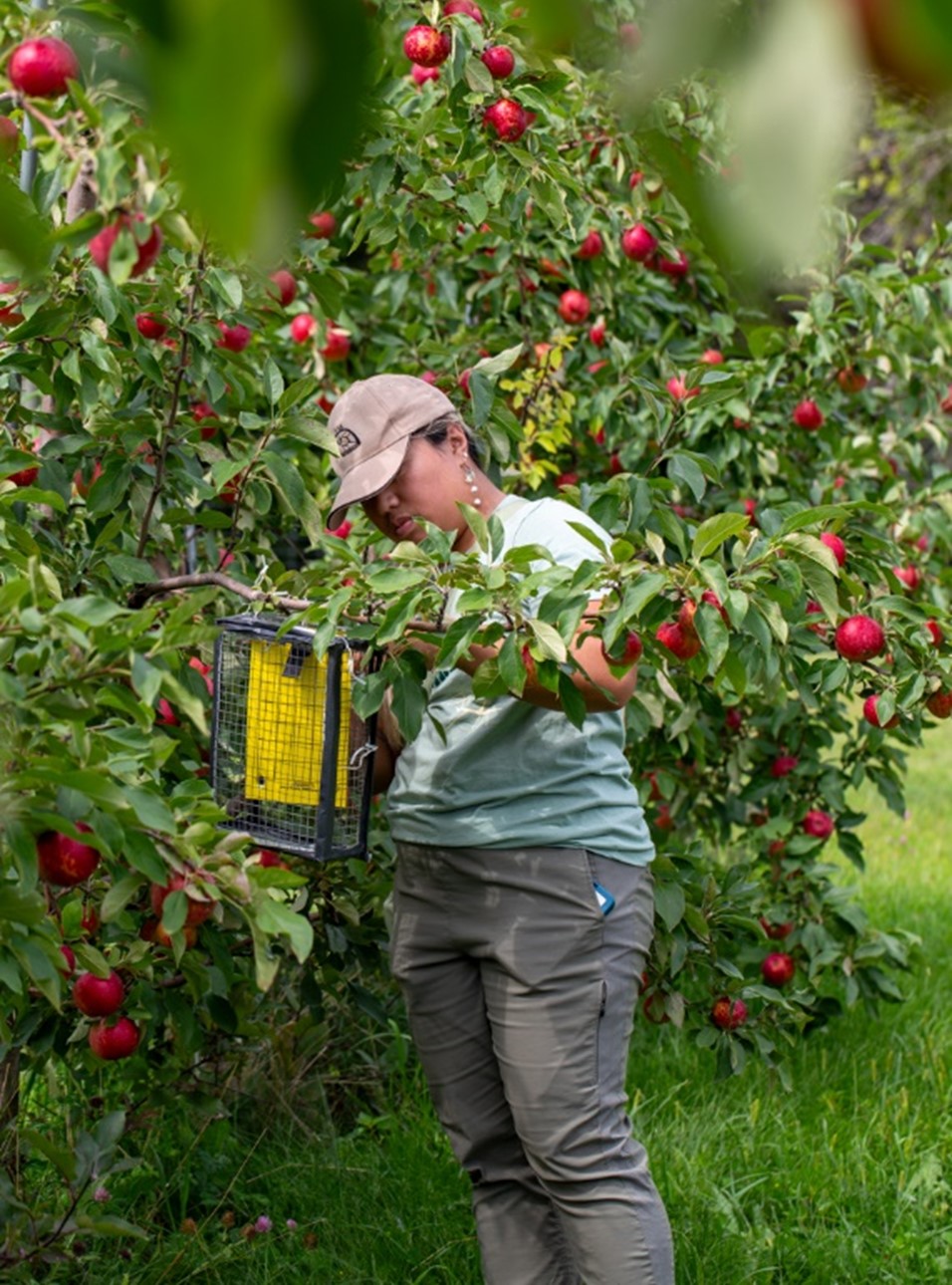The samurai wasp, Trissolcus japonicus, is a parasitic wasp native to Asia. It is known for attacking the brown marmorated stink bug (BMSB), an invasive pest that feeds on a variety of field, vegetable, and fruit crops.
The arrival of this wasp in the United States in 2014 garnered research attention because of its potential to suppress BMSB populations, but also because T. japonicus has been documented to attack several native stink bug species.
In 2022 and 2023 surveys detected T. japonicus individuals in St. Paul, MN. This led to a Minnesota Invasive Terrestrial Plants and Pests Center (MITPPC) funded project lead by Dr. George Heimpel and Sabrina Celis with the University of Minnesota (UMN) looking at the benefits and risks of T. japonicus in the state, beginning with surveys for the wasp, BMSB, and native stink bugs in Minnesota apple orchards. The MDA is collaborating on this project through monitoring and collecting BMSB and suspect samurai wasps throughout the state.
In 2024, two T. japonicus individual were found greater than 30 miles from the initial detection site. This indicates that while populations are currently low, T. japonicus is likely present in more of the state than is currently recognized.
Low parasitism of BMSB by native parasitoids indicated that there is an opportunity for a more effective parasitoid like T. japonicus to exert stronger control on BMSB populations. Eight species of native stink bugs were also detected in our surveys. The results of these surveys and additional lab studies will be used to determine if the benefits of having this wasp attack BMSB outweigh the potential risk to native species.

Technical Assistance Trainings and Events
These trainings and events are made possible through the Minnesota Resilient Food Systems Infrastructure program, which is funded by a cooperative agreement between the United States Department of Agriculture (USDA) and the Minnesota Department of Agriculture (MDA). The contents of the presentations and other program materials are solely the responsibility of the authors and do not necessarily represent the official views of USDA or the MDA.

